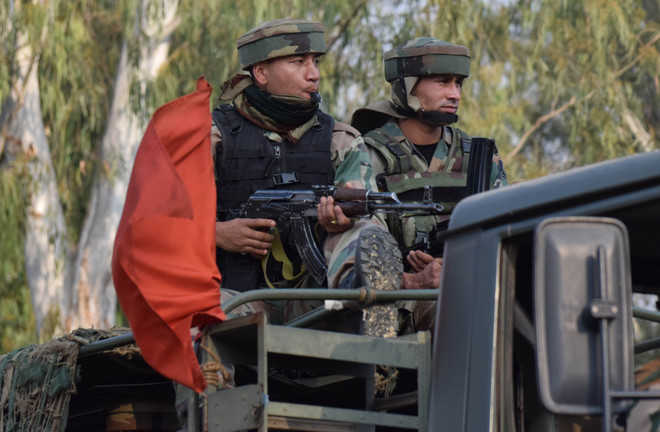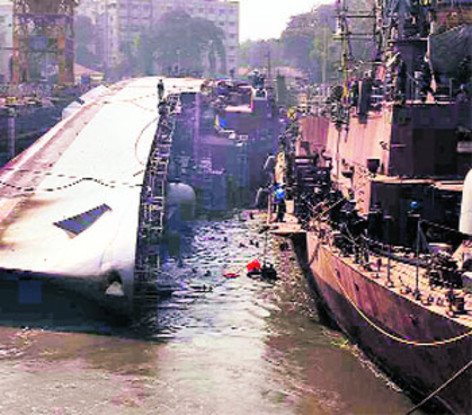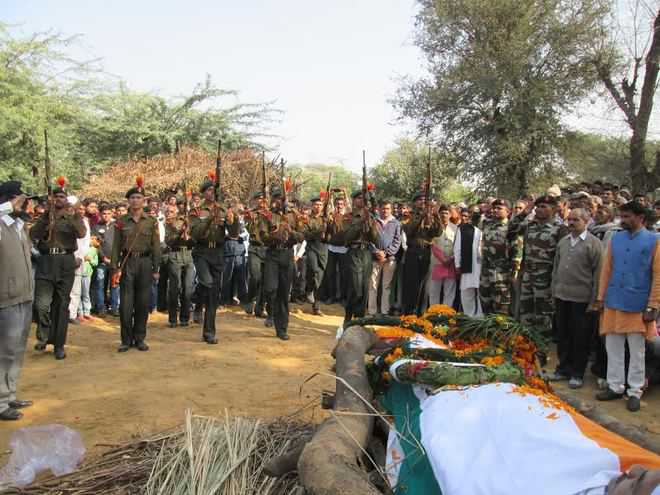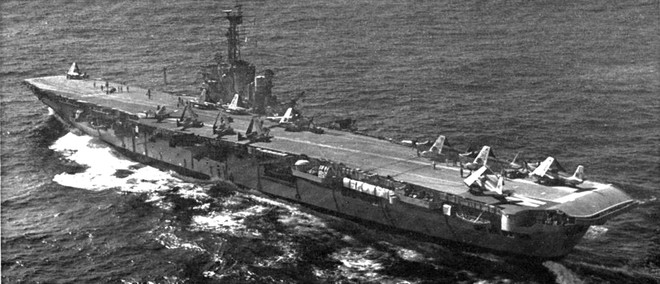
Army personnel carry out a door-to-door search operation after a convoy was ambushed in Pampore on Saturday. Mohd Amin War
Suhail A Shah
Tribune News Service
Anantnag, December 17
Three soldiers were killed after militants targeted an Army convoy in Pampore town along the Srinagar-Jammu National Highway, some 15 km south of Srinagar, this afternoon.Army spokesperson Col Rajesh Kalai said a search operation was on “to try and corner the attackers”. He added that the identities of the martyred Army men will be revealed only after their next of kin have been informed. The attack took place at the busy Kadlabal Chowk of Pampore town in Pulwama district around 3.30 pm.Police sources said the militants, believed to be riding a motorbike, appeared from a bylane and opened indiscriminate fire at the Army convoy, which was moving slowly amid the traffic.“The militants are believed to have been two to three in number. We have cordoned off certain localities and efforts to locate the militants are on,” a senior police official from the area said.Panic gripped the entire Kadlabal area and traffic on the national highway came to a standstill as gunshots were fired in the air.“People ran for safety into the narrow bylanes and alleys as intense firing was heard. Shopkeepers downed shutters and took refuge in their shops to wait out the exchange of fire,” an eyewitness told The Tribune.No militant outfit has so far claimed responsibility for the attack even as police sources reveal there were prior intelligence inputs regarding the planning of such an attack.“There were some inputs with the security agencies and the security along the national highway had been heightened. Random stoppages and searches were being carried out on the Srinagar-Anantnag stretch of the highway. The militants, however, chose a busy place with heavy civilian movement for the attack,” a police source said.This is the second major militant attack to have been carried out in the Pampore area in less than six months.On June 25, militants from Lashkar-e-Toiba attacked a CRPF convoy, killing at least eight men and injuring 20 less than a kilometre north of today’s attack site. Two militants were also killed. The cordon and search operations, meanwhile, were continuing in Pampore town.
3 soldiers killed in Kashmir ambush
SRINAGAR: Motorcycle-riding militants fired on an army bus in southern Kashmir on Saturday, killing three soldiers, but the fatalities could have been higher had the driver not kept going despite being shot, police said.
Most of the soldiers were returning from leave or moving to their new deployment, and were unarmed. The attack occurred around 2pm at a crowded place in Pampore, limiting the soldiers’ ability to retaliate with full force, an army spokesman said.
The wounded soldiers were moved to the base hospital in Srinagar but three of them did not survive.
Two security personnel, including the driver of the army bus, were wounded.
The bus was going from Jammu to the state’s summer capital Srinagar. The shooting led to panic in the area, and the attackers fled once the soldiers prepared to retaliate.
After years of decline, militant violence increased in Kashmir this year, deepening a chill in ties with Pakistan whom India directly or indirectly blamed for at least three deadly attacks on military bases in Pathankot in Punjab and Kashmir’s Uri and Nagrota.
The attack comes at a time Kashmir has been limping back to normal after the killing of militant Burhan Wani by government forces sparked five months of protests across the region that left some 90 people dead
“A bad year in terms of security force casualties just got worse,” Omar Abdullah, the leader of Jammu and Kashmir’s main opposition party National Conference, said in a Twitter post following the attack.
Officials said security forces cordoned off the attack site and launched a search for the attackers. This was the fourth militant attack on security force this year in Pampore on the outskirts of Srinagar, including two major holdups. Eight CRPF personnel were killed and 20 injured on June 25 in an ambush on a convoy in the town’s Frestbal area. Two militants had also been killed in the attack.
In February, five security personnel and a civilian were killed after militants first attacked a CRPF convoy and then stormed the landmark EDI building on the Srinagar-Jammu highway. An ensuing encounter lasted about 48 hours and ended with the killing of three militants. The building saw another militant holdup in October.
TERROR STRIKES: URI & AFTER
Sept 18: Heavily armed militants storm army base near LoC in Uri, killing 18 soldiers. Oct 4: Militants attack BSF and army camps in Baramulla, 1 dead. Oct 10: Two militants storm govt building in Pampore, neutralised after a 57-hour operation. Oct 28: Militants mutilate 30-year-old sepoy Mandeep Singh’s body in Machil sector. Nov 22: Ultras kill three soldiers in north Kashmir’s Machil; body of one of the soldiers mutilated. Nov 25: Encounter in Naidkhai area of Bandipora district leaves a solider and two militants killed
HT PHOTOSecurity forces in Pampore on the outskirts of Srinagar on Saturday.
NEWS ANALYSIS
Pro-militancy narrative encourages ultras to attack security personnel
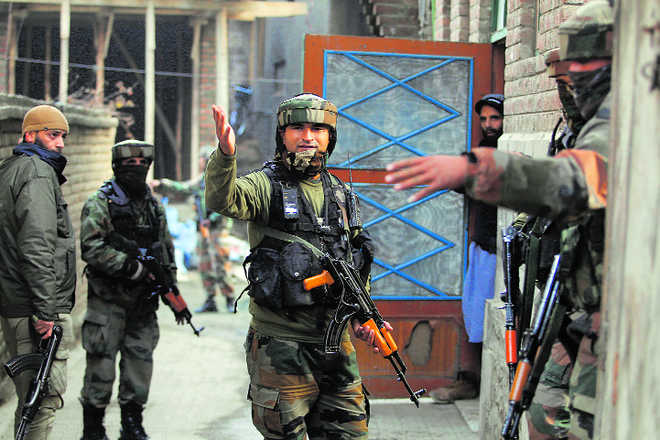
Soldiers carry out door-to-door searches at Pampore in Pulwama district after militants attacked an Army convoy killing three jawans on Saturday. Tribune Photo: Amin War
Amit Khajuria
Tribune News Service
Jammu, December 17
The killing of three soldiers in an ambush by militants in Pampore, near Srinagar, on Saturday among other things is the result of pro-militancy and violence narrative by Kashmiri political leaders and the BJP’s inability to take a stand against these elements.All the energies for the next couple of days would be channelised in determining how and why of the terror attack at Pampore, which has become a favourite spot of the militants to attack the convoys of security forces, but the fact that how this overall atmosphere has turned in favour of such attacks would remain unaddressed.The political leaders like Chief Minister Mehbooba Mufti and her predecessors Farooq Abdullah and Omar Abdullah have created a halo around Hizbul Mujahideen commander Burhan Wani, who was killed in an encounter with security forces on July 8. So far, none of these leaders and those from other parties like the Congress and CPM has been critical of Burhan. If separatists and Pakistan hailed him as a “martyr”, these leaders and parties have silently endorsed that aura-filled profile.The Army is made to defend its own acts of omission and commission. There are high-profile visits, which have become rather more frequent after the September 18th attack at the Army base at Uri in which 20 soldiers lost their lives. November 29 — exactly two months after the surgical strikes at the terrorist infrastructure in Pakistan-occupied Kashmir (September 29th), the political narrative in the Valley has been accusatory toward the Army.Mehbooba, Omar and Farooq Abdullah have adopted a single line that the dialogue with Pakistan should be started. Omar says the need for the dialogue with Pakistan and other stakeholders is “unquestionable.” Mehbooba asserts that there is no other option available except to talk to Islamabad. Farooq claims that no solution would come forth unless the talks are held with Pakistan leadership. Except for some appeal to Pakistan not to allow its soil to be used for disturbances in Jammu and Kashmir by Mehbooba Mufti, all other leaders speak as if the whole fault lay with India for making talking terror-first as a starting point of bilateral talks with Pakistan.The home-schooling in Kashmir is encouraging hate-India campaign. This is generating a atmosphere conducive for terrorists and their actions. In this atmosphere, it is neither the first, nor the last attack.

















